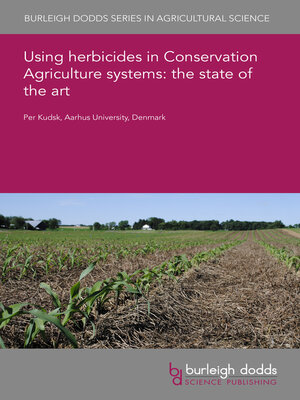Using herbicides in Conservation Agriculture systems
ebook ∣ the state of the art · Burleigh Dodds Series in Agricultural Science
By Per Kudsk

Sign up to save your library
With an OverDrive account, you can save your favorite libraries for at-a-glance information about availability. Find out more about OverDrive accounts.
Find this title in Libby, the library reading app by OverDrive.



Search for a digital library with this title
Title found at these libraries:
| Library Name | Distance |
|---|---|
| Loading... |
Conservation agriculture has received increasing interest worldwide as a cropping system addressing the future challenge of feeding an increasing world population while minimizing the negative environmental and climate impacts of agriculture and preserving soil fertility. There is an ongoing discussion whether conservation agriculture, adopting all three principles, will exacerbate problems with weeds and hence increases the need for weed control including herbicides but in practice synthetic herbicides are an integral part of a conservation agriculture cropping system. The primary concerns associated with herbicide performance in conservation agriculture are 1) the higher content of organic matter in the uppermost soil layer that may reduce the efficacy of residual herbicides and 2) the occurrence of crop residues on the soil surface that may intercept herbicide reducing deposition on the soil and weeds. This chapter will address these concerns but also discuss some recent developments in conservation agriculture that could influence herbicide use.







